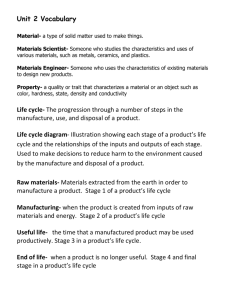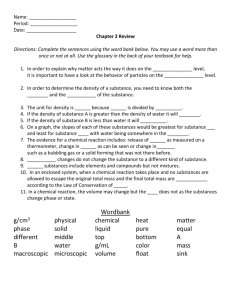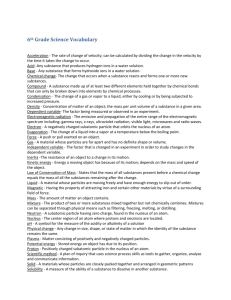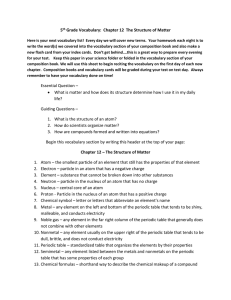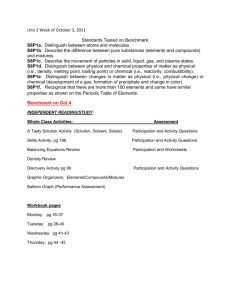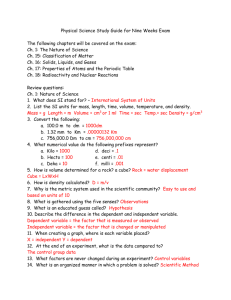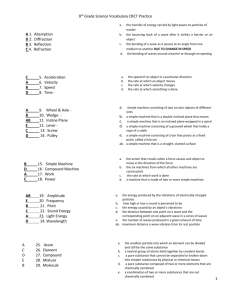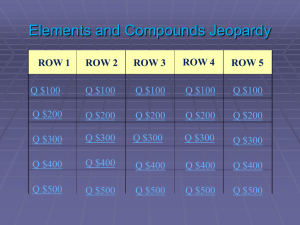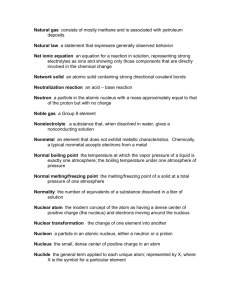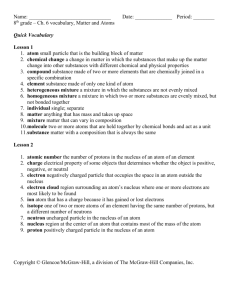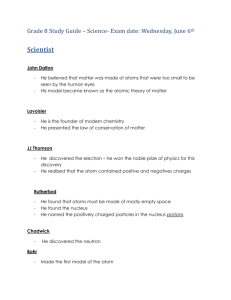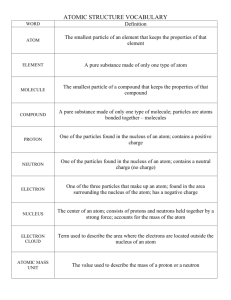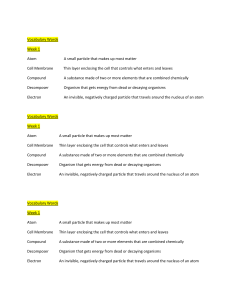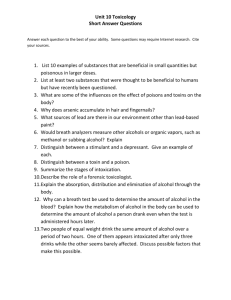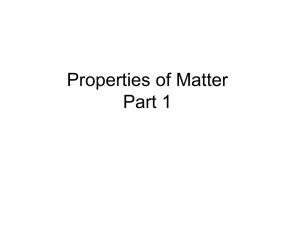Unit 1-Parent Letter
advertisement
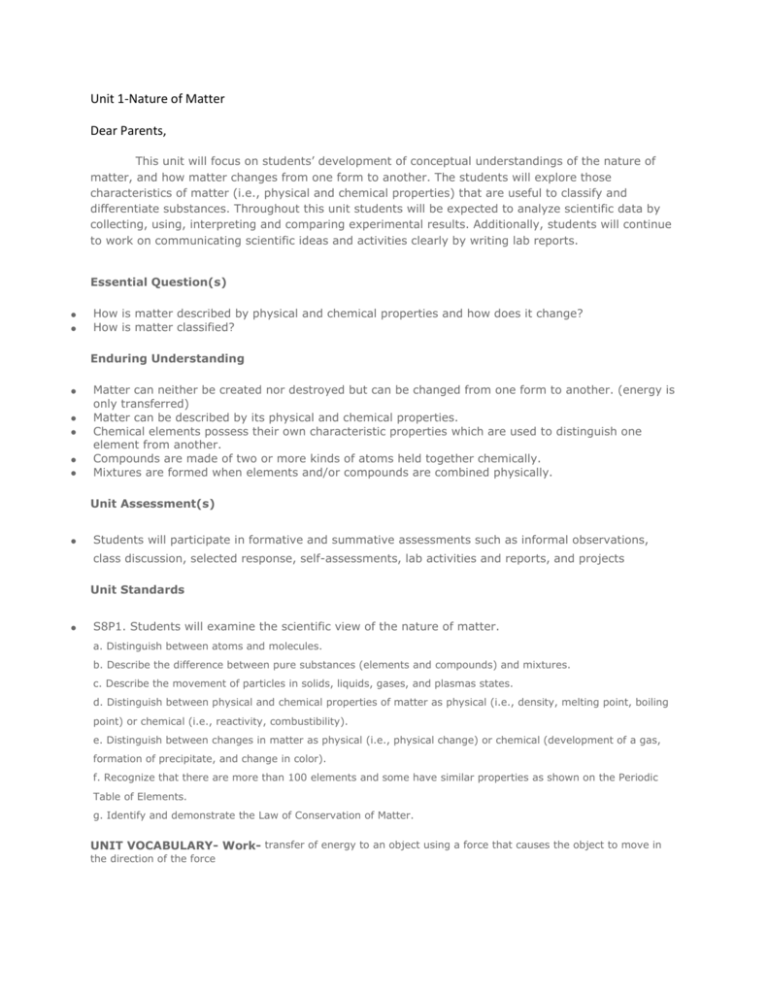
Unit 1-Nature of Matter Dear Parents, This unit will focus on students’ development of conceptual understandings of the nature of matter, and how matter changes from one form to another. The students will explore those characteristics of matter (i.e., physical and chemical properties) that are useful to classify and differentiate substances. Throughout this unit students will be expected to analyze scientific data by collecting, using, interpreting and comparing experimental results. Additionally, students will continue to work on communicating scientific ideas and activities clearly by writing lab reports. Essential Question(s) How is matter described by physical and chemical properties and how does it change? How is matter classified? Enduring Understanding Matter can neither be created nor destroyed but can be changed from one form to another. (energy is only transferred) Matter can be described by its physical and chemical properties. Chemical elements possess their own characteristic properties which are used to distinguish one element from another. Compounds are made of two or more kinds of atoms held together chemically. Mixtures are formed when elements and/or compounds are combined physically. Unit Assessment(s) Students will participate in formative and summative assessments such as informal observations, class discussion, selected response, self-assessments, lab activities and reports, and projects Unit Standards S8P1. Students will examine the scientific view of the nature of matter. a. Distinguish between atoms and molecules. b. Describe the difference between pure substances (elements and compounds) and mixtures. c. Describe the movement of particles in solids, liquids, gases, and plasmas states. d. Distinguish between physical and chemical properties of matter as physical (i.e., density, melting point, boiling point) or chemical (i.e., reactivity, combustibility). e. Distinguish between changes in matter as physical (i.e., physical change) or chemical (development of a gas, formation of precipitate, and change in color). f. Recognize that there are more than 100 elements and some have similar properties as shown on the Periodic Table of Elements. g. Identify and demonstrate the Law of Conservation of Matter. UNIT VOCABULARY- Work- transfer of energy to an object using a force that causes the object to move in the direction of the force Unit Vocabulary Atom the smallest unit of an element that maintains the chemical properties of that element Atomic Mass mass of an atom, in atomic mass units, located under element symbol Atomic number number of protons in the nucleus Compound a substance made of two or more atoms chemically combined Density measure of the amount mass in a given volume Electron negatively charged particle that lives outside of the nucleus Element a substance that cannot be separated or broken down into simpler substances by physical or chemical means Mass measure of the amount of matter in an object Matter anything that has mass and takes up space Mixtures combination of 2 or more substances not chemically combined Molecule the smallest part of a substance that keeps the chemical properties of that substance Neutron neutrally charged particle in the center of the atom Nucleus center of the atom, contains protons and neutrons Period horizontal row of elements Periodic Table of the Elements table that organizes all elements based on specific properties and characteristics Proton positively charged particle in the center of the atom screw simple machine consists of an inclined plane wrapped around a cylinder Volume the amount of space an object takes up wedge simple machine made of 2 inclined planes and moves Weight -measure of the gravitational pull on an object I look forward to working with your son or daughter this year!
